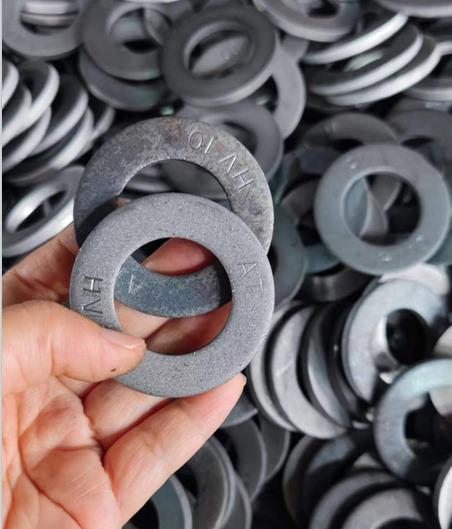Top Rubber Seal Flat Washers for Enhanced Performance and Durability
The Best Flat Washer with Rubber Seal A Comprehensive Guide
In the world of mechanical and construction applications, small components often play a critical role in ensuring the longevity and reliability of structures and devices. Among these essential components, flat washers with rubber seals are particularly noteworthy. They serve a dual purpose distributing load and providing a seal to prevent fluid or air leakage. This article explores what makes the best flat washer with rubber seal, its applications, and tips for selection.
What is a Flat Washer with Rubber Seal?
A flat washer is a simple, disc-shaped component typically made of metal or plastic. Its primary role is to distribute the load of a fastener, such as a bolt or screw, to prevent damage to the surface beneath. A flat washer with a rubber seal, however, takes this a step further by incorporating a rubber ring or backing, which adds a layer of protection against environmental factors, such as moisture and dirt. This combination enhances the washer's sealing ability, making it particularly valuable in applications where fluid retention is paramount.
Applications of Flat Washers with Rubber Seals
Flat washers with rubber seals find their applications in various industries, including automotive, plumbing, and construction. In the automotive sector, these washers are used to ensure that fluid-filled components, like engines and brakes, remain leak-proof. In plumbing, they are essential for sealing joints where pipes and fixtures meet, preventing leaks that could result in water damage or costly repairs. In construction, they help secure and stabilize connections in outdoor structures, where exposure to the elements can lead to degradation over time.
What to Look for When Choosing the Best Flat Washer with Rubber Seal
best flat washer with rubber seal

1. Material Quality The durability of a flat washer with a rubber seal largely depends on its material. Stainless steel or zinc-plated washers offer excellent corrosion resistance, especially when used outdoors or in moist environments. The rubber should also be of high quality—EPDM, neoprene, and silicone are commonly used materials, known for their weather resistance and longevity.
2. Size and Thickness Flat washers come in various diameters and thicknesses. It’s crucial to select a washer that fits the specific fastener and application you are working with. A washer that's too small won’t effectively distribute the load, while one that’s too large could compromise the seal.
3. Seal Design There are different designs of rubber seals, including those that are bonded to the washer or those that fit securely within a groove. Choose a seal design that is compatible with your application to ensure optimal performance.
4. Temperature Resistance Depending on the environment in which the washer will be used, consider the temperature tolerance of both the metal and the rubber. High-performance applications might require washers that can withstand extreme heat or cold.
5. Cost and Availability While it’s essential to find a high-quality washer, budget constraints cannot be ignored. Look for suppliers that offer a balance of quality and affordability. Bulk purchasing might also provide savings.
Conclusion
Choosing the best flat washer with rubber seal is a critical decision that can significantly affect the integrity and performance of your projects. These washers not only help in load distribution but also play an essential role in preventing leaks and protecting components from environmental hazards. By focusing on material quality, appropriate size and thickness, effective seal design, temperature resistance, and cost considerations, you can ensure that your selection meets the specific needs of your application. Whether for automotive repairs, plumbing installations, or construction projects, investing in reliable washers will enhance the durability and reliability of your work. Remember, in the world of engineering and construction, it’s often the smallest components that make the biggest difference.
-
Top Choices for Plasterboard FixingNewsDec.26,2024
-
The Versatility of Specialty WashersNewsDec.26,2024
-
Secure Your ProjectsNewsDec.26,2024
-
Essential Screws for Chipboard Flooring ProjectsNewsDec.26,2024
-
Choosing the Right Drywall ScrewsNewsDec.26,2024
-
Black Phosphate Screws for Superior PerformanceNewsDec.26,2024
-
The Versatile Choice of Nylon Flat Washers for Your NeedsNewsDec.18,2024










